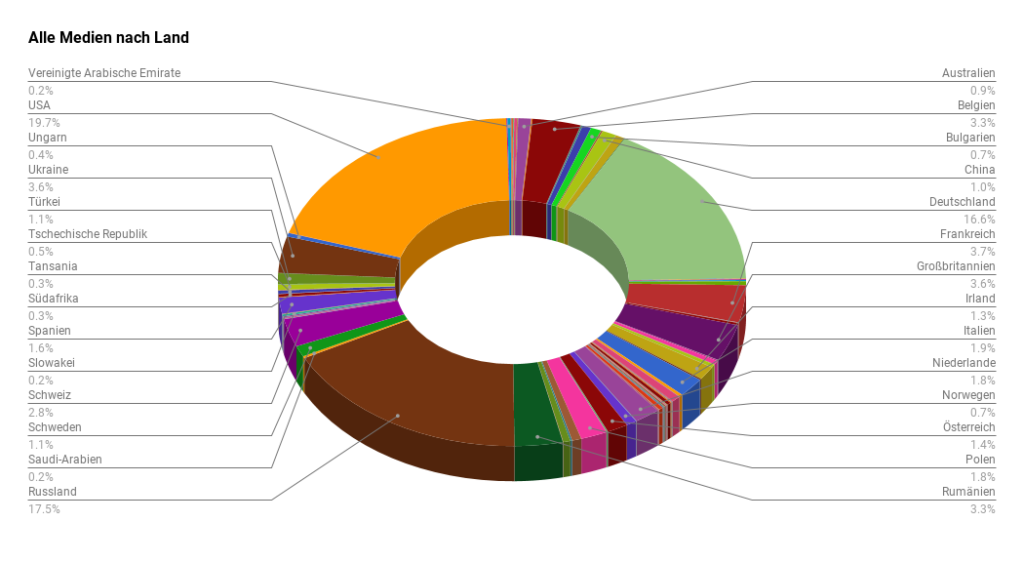ONLINE MEDIA MONITORING BY PRESSRELATIONS – CHANGES, OPPOTRUNITIES, CHALLENDES AND CURRENT TRENDS
Eva-Katharina Wenzel speaks with Dr Michael Magner, Head of Online Media Department, and Stephanie Gray, Head of Media Services.
In the past couple of years pressrelations’ online media set has grown from some 30,000 online media sources to over 45,000. “Being a system provider for media monitoring companies in other countries, we have an excellent source database, especially in our core countries which, in addition to Germany, include Switzerland, Ireland, Russia, Benelux and the US. On top of that, we have access to a very internationally diverse online media set,” says Dr Michael Magner, Head of Online Media Department at pressrelations. “Back in 2001 when we started monitoring online media, we were the first to offer such services”, explains Dr Magner. “For over ten years we have been a Full Service Provider of media monitoring of all channels, yet online media monitoring remains one of our absolute core competences.”
However, the vast number of sources alone does not paint the whole picture – the quality of these sources plays an important role. For this reason, we work with a high quality media set, meaning that we exclusively scan editorial sources which regularly publish new content on a dedicated news page. This also means that the automated press mailing lists as well as webpages with race baiting content and similarly disreputable online sources are mostly ignored. Moreover, we are also able to expand our already wide media set and add specific news sources upon request from our customers or partners.
Quality management at pressrelations
A selection of media sources is only one part of quality management: in order to ensure that we – and effectively our customers – do not miss a single relevant article, our system responds to a media source with an unusually low number of articles being published and classified as relevant. “This is always a sign of some technical changes, and a cue for us to re-adjust the settings,” says Michael Magner. “Our crawlers are very robust, but in case of a website relaunch, for example, we might have to re-tune some parameters to maintain a comprehensive monitoring service.” This essential quality management is continuously provided by a team of experienced specialists.
Currently, we scan about a million news items a day, which we also evaluate for our customers every day of the year. Our team already uses the second generation of the in-house crawler technology which registers new articles right after they have been published and scours them for relevant keywords. This means our online media monitoring solution delivers the results almost in real time.
Structured output of the search results
Whether the customer wants a purely automated online monitoring solution or an additional manual review of the results by an editor, it is important to remember that the degree of usefulness of the search results strongly depends on the availability of a structured and customer specific delivery. “We supplement every article with meta-data such as visits or AVE. This helps the recipients of the media response with classification of the media coverage,“ says Stephanie Gray, pressrelations Head of Media Services. Furthermore, identical news pieces, that have often appeared in various media sources, can be bundled in so-called clusters. This means that such articles will not take up twice or thrice as much place in the media review, but will only be represented once with a hint ‘also appeared in’. This practice also helps to keep a clear overview of the media coverage.
Geo-blocking and GDPR
Internationally represented and internationally active businesses need to extend their scope of media monitoring beyond the German (online) media landscape and also keep an eye on the coverage in the relevant core countries. This might seem obvious, but it can be tricky to implement, as foreign websites, especially from the US, cannot always be easily accessed from Germany. A systematic monitoring of such sources is even more problematic. pressrelations has indeed solved the crawler problem and our system can grab the articles with relevant keywords, however, depending on the website owner’s position on geo-blocking, these articles still cannot be accessed by the customers: due to the copyright and licensing laws and regulations many US websites are inaccessible in Germany. At this point the IT department of the business itself can provide a solution. In any case, we always provide the meta-data so that the articles can be analysed.
Trends in the online media landscape
“In the recent years we have been noticing more and more that there is a growing number of media publications, which are considered to be very important and opinion shaping, in the niche and specialised fields as well as across many thematic areas, which only publish online content,” says Stephanie Gray. A couple of years ago such status was exclusively reserved for print media. In Germany, for example, Spiegel Online has been standing on its own for a while now and recognised as a separate instance independent from the print edition. In the US such an example would be the Huffington Post which does not even have a print equivalent.
Another topic of interest that strongly preoccupies readers and media analysts alike is the paywall which is being implemented by the publishers on their online content ever more often. Here you have to look for a solution on a case by case basis if the customer wants to incorporate the paid content. “A solution for paywalls has been on our agenda since 2001,” says Michael Magner, “so, it’s nothing new, really.” There is also a counter-trend: “Some publishers have recently done away with paywalls,” according to Stephanie Gray. “For example, the New York Times that offered almost no free content six years ago.” The reason behind this development is that paywall systems only pay off if the revenue from paid content exceeds the revenue from advertising. “And this is almost never the case,” says Dr Magner.
The comments section in online media is currently losing its importance. A couple of years ago it might have seemed like the comments beneath the article would eventually be as valuable as the reporting itself, but in reality some websites offer only limited functionality for user comments. “It is just too much work for website owners,“ says Michael Magner and names this as one of the reasons for this trend. “Another one would possibly be the opportunity that the Social Web now offer for a dialogue on very specific topics.”







